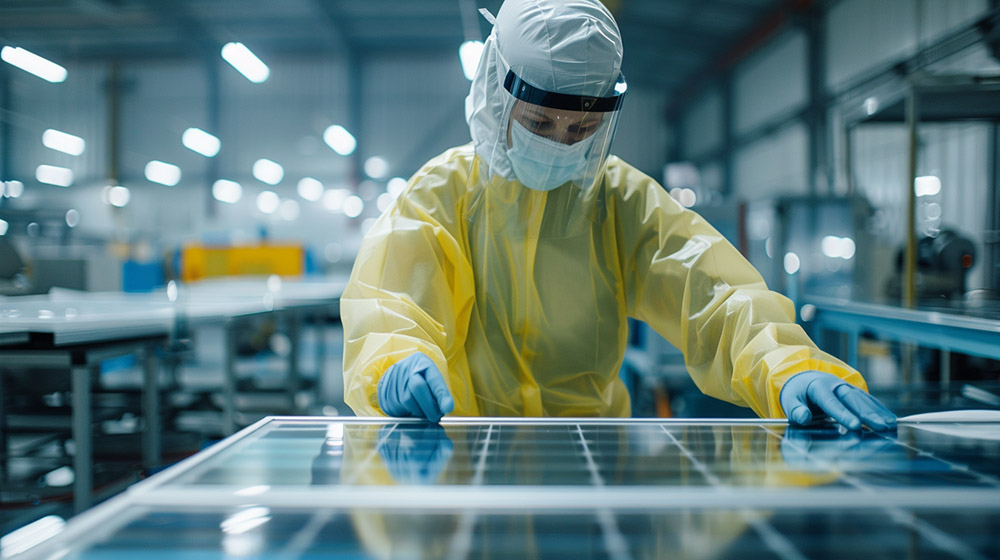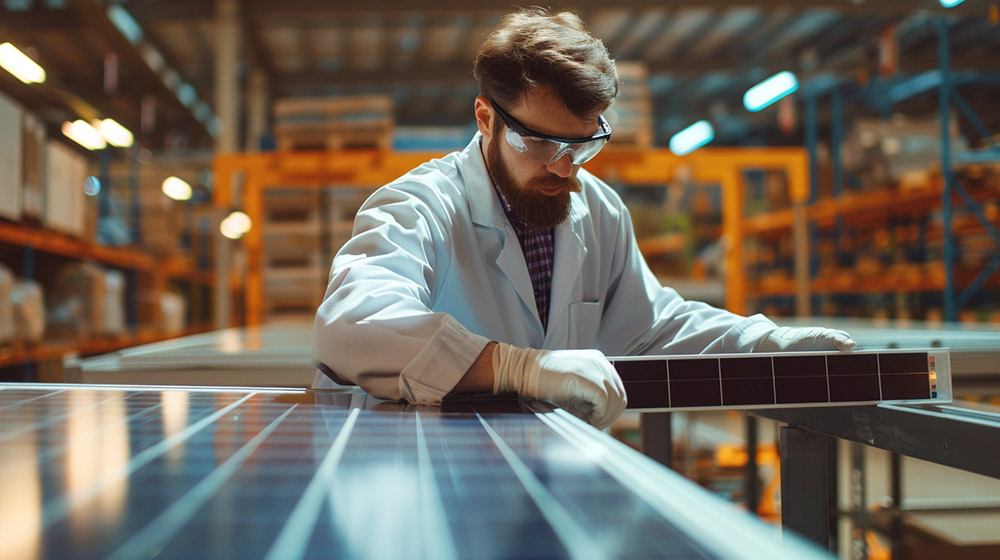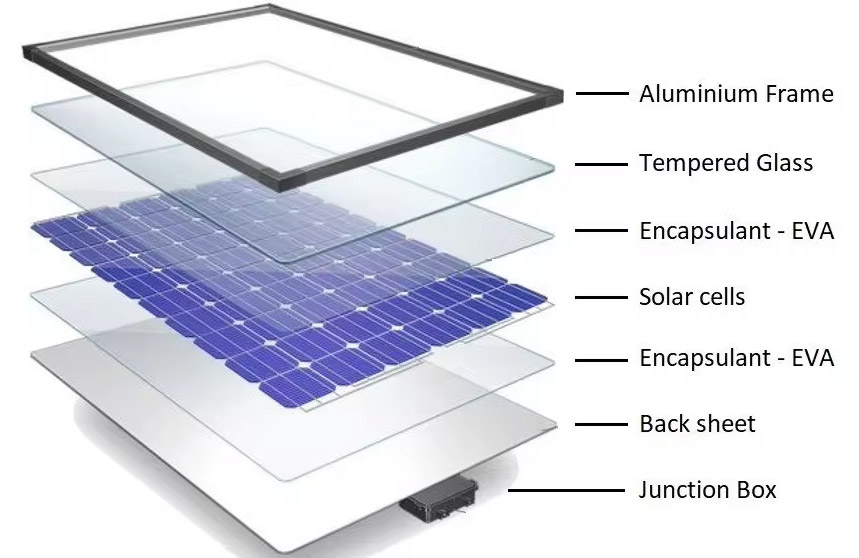How Are Solar Panels Made?

Harnessing clean and renewable energy sources is more important than ever. Solar panels have emerged as a powerful solution, capturing the sun’s energy and converting it into electricity for our homes and businesses. Advancements in manufacturing processes have also significantly driven down the cost of solar panels, making them a more accessible renewable energy option. But how exactly are solar panels made? This article delves into the fascinating process behind solar panel manufacturing, from the raw materials to the finished product ready to generate clean energy.
As you explore this article, you’ll gain a clear understanding of the key steps involved in solar panel production. We’ll break down the process into easy-to-understand sections, using visuals to enhance your learning experience. Whether you’re a homeowner considering solar power, a student curious about renewable energy technology, or simply someone interested in how things are made, this comprehensive guide will shed light on the remarkable journey of a solar panel.
How Are Solar Panels Manufactured? Step by Step
Let’s embark on a step-by-step journey through the fascinating solar panel manufacturing process. Each stage is critical in transforming raw materials into the clean energy powerhouses we see on rooftops today.
Step 1: From Sand to Silicon Wafers
The foundation of a solar panel lies in a surprisingly common material: silicon. This abundant element, the second most prevalent in Earth’s crust, starts its journey as silicon dioxide, often found in sand or quartz rock. Through a multi-stage process, manufacturers purify the silicon, removing impurities and transforming it into a highly pure form.
The next step involves creating thin slices of silicon, known as wafers. Imagine a smooth, uniform silicon rod – this is then sliced into these wafers using a diamond-tipped saw or a wire saw with an abrasive slurry. The thickness of these wafers is crucial, as it affects the panel’s light absorption and overall efficiency.
Step 2: Creating Solar Cells (Doping and the Electrical Junction)
With our thin silicon wafers in hand, it’s time to transform them into the heart of the solar panel – the solar cell. This step involves a fascinating process called doping, where we strategically introduce impurities into the silicon wafer to create an electric field. Here’s how it works:
- Doping with Magic Elements: Imagine the pure silicon wafer as a peaceful neighbourhood with very little electrical activity. Doping introduces elements like boron or phosphorus into the silicon lattice. These “magic elements” act like troublemakers, disrupting the neighbourhood’s electrical balance.
- The P-N Junction: Boron atoms have one less electron than silicon, creating “holes” with positive charges. Conversely, phosphorus atoms have one extra electron, resulting in negatively charged regions. This creates a special zone within the wafer called the P-N junction, where positive and negative charges meet.
The Magic of Electricity: When sunlight strikes the P-N junction, it excites electrons in the silicon atoms. These energised electrons, seeking balance, flow across the junction, creating an electric current. This is the essence of the photovoltaic effect in action – sunlight is directly converted into electricity!
Optimising Efficiency: Doping allows us to control the flow of electricity within the solar cell. Manufacturers carefully fine-tune the doping process to maximise the number of electrons generated and captured, ultimately improving the overall efficiency of the solar panel.
Step 3: Assembly and Encapsulation (Connecting Cells, Adding Layers, and Framing)
We’ve created our solar cells, but the journey isn’t over yet. Now it’s time to assemble these cells into a complete solar panel, ready to weather the elements and generate clean energy. This step involves three key aspects: connecting the cells, adding protective layers, and providing a sturdy frame.
- Connecting the Cells: Imagine a team of tiny workers meticulously wiring individual solar cells together. In reality, this process uses metal ribbons or conductive paste to connect each cell’s positive and negative terminals. This creates a series circuit, allowing electricity to flow from one cell to the next and ultimately out of the panel.
- Adding Layers of Protection: Our delicate solar cells need a shield against the elements. Manufacturers carefully laminate the assembled cells between layers of protective materials. A layer of ethylene vinyl acetate (EVA) encapsulates the cells, providing insulation and protection from moisture and physical damage. A tempered glass sheet is also placed on the front side for superior strength and impact resistance.
- Building a Strong Frame: The final touch involves encasing the entire assembly within a sturdy frame. Aluminium frames are a popular choice due to their lightweight yet robust nature. This frame provides structural support, protects the panel from wind and hail, and allows for easy mounting on rooftops or solar installations.

Step 4: Testing and Quality Control (Ensuring Panel Functionality)
Before a solar panel embarks on its journey to power homes and businesses, it undergoes rigorous testing and quality control procedures. This crucial step ensures each panel meets the highest performance, durability, and safety standards.
- Performance Testing: Manufacturers utilise specialised equipment to measure the electrical output of each panel under simulated sunlight conditions. This ensures the panel generates the expected electricity amount and operates optimally.
- Durability Testing: Solar panels are built to withstand harsh weather conditions. Manufacturers subject them to extreme temperatures, humidity, and mechanical stress to guarantee they can endure years of real-world use.
- Safety Checks: Electrical safety is paramount. Panels undergo rigorous testing to ensure proper grounding, insulation, and protection against electrical faults. This guarantees safe operation and minimises any potential risks.
By meticulously checking each panel at various stages of production, manufacturers ensure that only the highest quality solar panels reach the market.
Did you know that a study by Barnes, Laura L. on the “Environmental Impact of Solar Panel Manufacturing and End-of-Life Management: Technology and Policy Options.” (2017) extensively explored the environmental impact of solar panel manufacturing and the importance of sustainable practices in the industry. The study specifically focused on the environmental impact of solar panel manufacturing and end-of-life management, emphasising the need for technology and policy options to address these issues.
The study found that the environmental impact of solar panel manufacturing includes factors such as energy consumption, greenhouse gas emissions, water usage, and waste generation. Sustainable practices aim to mitigate these impacts through the adoption of cleaner production processes, recycling initiatives, and responsible end-of-life management strategies.
The Essential Ingredients: A List of Solar Panel Components

Like a delicious recipe that relies on a specific blend of ingredients, solar panels function thanks to a combination of key components. Each part plays a crucial role in capturing sunlight and converting it into clean electricity. Here’s a breakdown of the essential elements that make up a solar panel:
- Silicon Cells: The heart of the solar panel, these cells are crafted from purified silicon wafers. Doped with specific elements, they create an electric field that allows sunlight to generate electricity through the photovoltaic effect.
- Tempered Glass: Providing a tough and transparent shield on the front, tempered glass safeguards the delicate solar cells from hail, flying debris, and harsh weather conditions.
- Ethylene Vinyl Acetate (EVA): This encapsulating material acts like a protective blanket, shielding the internal components from moisture, dust, and other environmental threats. Additionally, EVA helps to hold all the elements of the panel together.
- Backsheet: The back of the panel is fortified with a layer of backsheet material, typically composed of polymers or fluoropolymers. This layer provides weatherproofing and additional protection against the elements.
- Aluminium Frame: Lightweight yet robust, the aluminium frame offers structural support for the entire panel. It allows for secure mounting on rooftops or solar installations.
- Electrical Connections: While not a physical component itself, the electrical connections are vital. These connections, often made with copper wires or conductive paste, link individual solar cells in a series circuit. This enables the electricity generated by each cell to flow and be harnessed for use.
- Junction Box (Optional): Some solar panels incorporate a junction box on the back. This weatherproof enclosure houses the electrical connections and provides a convenient point for accessing the panel’s wiring. It may also include safety features like bypass diodes.
Continuous Improvement: It’s important to note that each solar panel component has undergone continuous refinement and improvement over the years. Manufacturers strive to enhance efficiency and durability and reduce production costs. This ongoing innovation has significantly contributed to the declining cost of solar panels, making them a more accessible and attractive option for clean energy production.
By understanding these essential components, you gain a deeper appreciation for the intricate technology behind solar panels and their growing role in a sustainable future.

